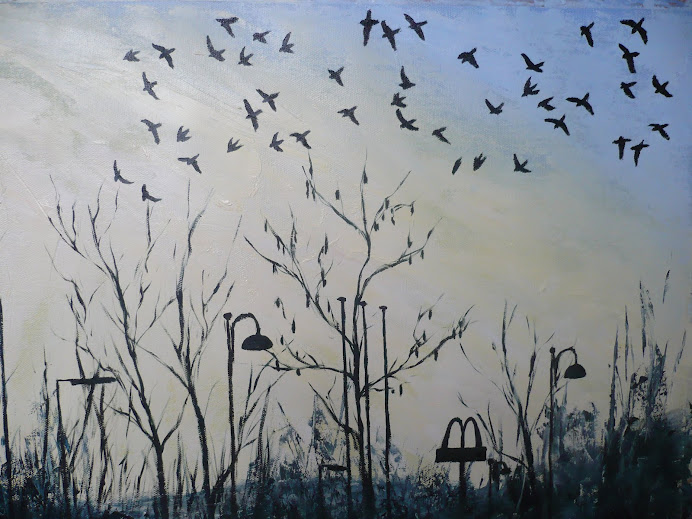





With so many different techniques and technical problems to get used to, this was without a doubt the hardest painting to get right.
An unusual aspect with defining the portraits of the figures was the fact that I could only paint the lightest part of the features, as the paint underneath was representing the shadows on the faces, and this was quite tricky to get used to.
Having read Man With a Blue Scarf recently, which is an account by Martin Gayford of posing for a portrait by Lucian Freud, Gayford includes a section from a 1954 article in Encounter where Freud explains his thought processes behind painting a portrait;
"The artist who tries to serve nature is only an executive artist. And, since the model he so faithfully copies is not going to be hung up next to the picture, since the picture is going to be there on its own, it is of no interest whether it is an accurate copy of the model." (Gayford, 2010, p.48)
It must be said that the figure on the bottom left of my painting is the only one who actually looks like the person I was trying to depict. The other three only have a passing resemblance. So it was a reassurance to read the words of Freud with regard to getting a likeness. It allowed me to concentrate on other aspects of the painting, such as atmosphere, colour and tone.
The three dimensional aspect of the painting is obviously difficult to get across in a photo, which is why I tried to take these photos from a lower angle, it can be seen in some places where the pond weed can be viewed both below and above the perspex, which I think is the most effective aspect of the painting. Scratching through the top layer of acrylic was also used to suggest the forms of the grass and this too has worked well.
There are many techniques and ideas used and discovered during the making of this painting that I hope to carry forward into future paintings and future courses.















